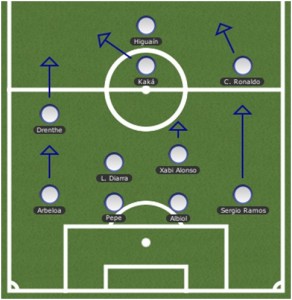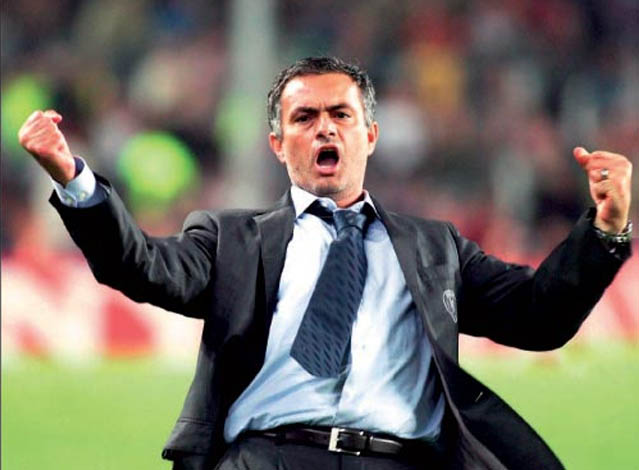-
Recent Articles
The Midfielder as Centerback
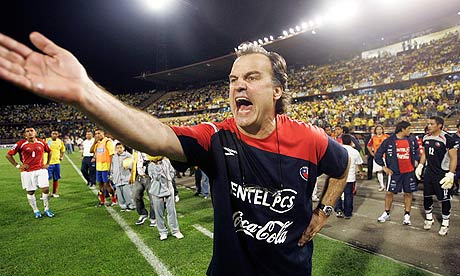 Marcelo Biesla and Josep Guardiola are both managers who play a very high line with their respective sides and who both demand that all players be technically proficient with the ball. Part of playing...
Marcelo Biesla and Josep Guardiola are both managers who play a very high line with their respective sides and who both demand that all players be technically proficient with the ball. Part of playing...Understanding the 4-4-2 Diamond
DEFENCE Despite the fact that there are four ways to play a diamond formation on FM, the differences between them are few and usually subtle. As a starting point, one thing each of them do have...3 at the back and the 4-4-2 Diamond
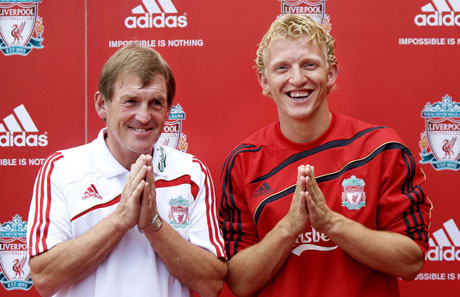 Last week Chelsea v Liverpool became the biggest tactical talking point of the season. Liverpool revived the the 3 man defence that Kenny debuted against Stoke. While with the introduction of Torres for £50m...
Last week Chelsea v Liverpool became the biggest tactical talking point of the season. Liverpool revived the the 3 man defence that Kenny debuted against Stoke. While with the introduction of Torres for £50m...How To Set Up A Back Four
 Last year, I wrote a guide about how to play a simple 4-4-2. One of the major components of that is the back four. In fact, most modern formations build upon four defenders; two full backs and two centre...
Last year, I wrote a guide about how to play a simple 4-4-2. One of the major components of that is the back four. In fact, most modern formations build upon four defenders; two full backs and two centre...Building Your Defence: Full Backs
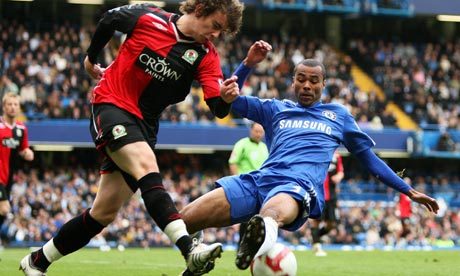 The modern full back is quickly becoming one of the most important players on the team sheet, infact even back in the days of Brian Clough, fat ed' argued that because of the space these players get in the final...
The modern full back is quickly becoming one of the most important players on the team sheet, infact even back in the days of Brian Clough, fat ed' argued that because of the space these players get in the final...
JOIN 1,180 READERS - SUBSCRIBE NOW TO OUR FOOTBALL MANAGER NEWSLETTER
Get the latest FM news & best community content delivered directly to your e-mail inbox!
How Will Jose Mourinho Manage at Real Madrid? (Part 2)
Written by: Gareth Millward
Category: Editorials
Posted on: June 22, 2010
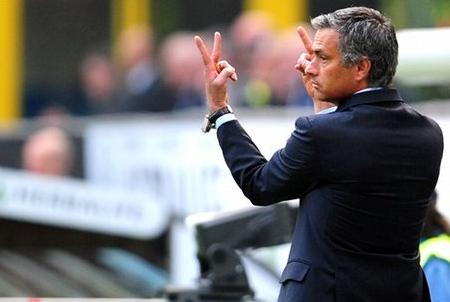
June 22, 2010
In the first article I discussed the nuts and bolts of the tactical plan I had set up. Essentially it is a 4-2-3-1 with the left winger withdrawn slightly. It is designed to prevent the opposition from using their possession to any effect, and then when we finally regain the ball we will be in a good position to launch effective attacks through the gaps. This is the sort of play Mourinho devised for Inter Milan in their big matches last season against sides who were likely to come at him and try to beat him. So, let’s look at my settings in a little more detail and explore why I made the choices I did.
The Tactical Plan
First of all, the team instructions. I chose to close down less, because this is a good way of keeping team shape. The point of the tactic on the defence is to mark the opposition’s forwards and prevent them from receiving any decent balls. As the passing stats from the 2010 Champions League final show, nearly the whole Bayern side completed more passes than Inter; but as Fernando Duarte pointed out, most of those passes were sideways. If you can’t penetrate, it doesn’t matter whether you have 40% of possession or 80%.
I then chose the counter strategy so that the team would withdraw slightly but attack hard once they got hold of the football. Finally, the rigid philosophy will keep the team playing in definite bands across the pitch, to keep their shape on the defence and to allow a progressive placement of players from the defenders through to the attackers.
The player instructions are designed to get the following movement from the players; Higuaín as a poacher will stay high up the field to be available as an option for the counter-attack. Kaká can put pressure on the opposition midfield, but can also sprint forward to join Higuaín when we regain the ball. With Ronaldo able to push hard up the line and slightly inside, and Drenthe stepping beyond the halfway line, the formation will take a sort of 4-2-4 shape on the attack. Xabi Alonso will move slightly further forward to offer another passing option in the centre, while Diarra, Pepe and Albiol can remain in position in case we lose the ball unexpectedly. This just leaves the full backs who can push on to assist the forwards, but must always be aware of their defensive duties.
In at the deep end
As first games go, it could have been much easier; but Barcelona at home will at least give us the opportunity to try our style against a very good team who like to play possession football. If we can make Barcelona toothless then things will look good for the rest of the season.
A couple of small points on our own team for this game. Injuries and suspensions have ruled out Sergio Ramos, Drenthe and Pepe. In order to strengthen the squad I have signed Juliano Belletti from Chelsea as cover for a number of defensive positions and Ibrahim Afellay from PSV Eindhoven. He can play through the middle as well as covering on the two wings.
I also made sure that I used opposition instructions on their DL, DR, AML and AMR. I chose to always close down and always tight mark. The reasoning was two-fold. First, defence in FM10 is much more stable when you put pressure on the opposition’s wide players because the marking system is far from perfect in this area of the pitch. Second, tactically it will force my wingers to track back in their defensive duties if for nothing else than to track any wing back that decides to burst forward out of defence. Between the two of them, my full back and winger on either flank should be able to work together to stop anyone driving deep down the wing to put in a cross.
The Game Plan
The following two diagrams show how my initial tactical plan should work against Barcelona’s 4-3-3. Their starting lineup for this match had a conventional back four (Márquez and Piqué in the centre, Daniel Alves and Abidal as wing backs), a defensive midfielder (Touré), two central midfielders (Xavi and Iniesta), two wingers (Henry and Krasic) and finally a lone striker (Ibrahimovic).
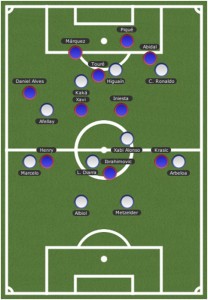
|
The first diagram shows the defensive shape of the team. Our full backs will be required to stay goal-side of their wingers, with our two centre backs keeping a watchful eye on Ibrahimovic. Our DMCs will match up with their MCs. Afellay will aim to track back fully and keep goal-side of Daniel Alves. Ronaldo, however, will keep an eye on Abidal but will not come as deep. He should be able to break away into the space on the right wing when we get the ball to launch a counter. Similarly, Kaká will monitor but not stick too tightly to Touré to allow him to break forward. Higuaín will sit on the shoulder of a centre back, ready to receive the ball in space.
The second diagram shows our shape on the attack. Kaká moves to support Higuaín, with Ronaldo also bursting forward, creating a line of three players in attack. Afellay supports this by moving into the final third and dropping in slightly behind the front three. In the gap between Alves and Xavi, he can play between the lines as well as getting back easily into positions should we lose possession. Note that Abidal’s position on Barcelona’s attack and on his defence is quite drastic. Either Abidal will be forced to stay in the right back position, or Ronaldo will exploit the space in behind him. Xabi Alonso is able to move into the space between Barca’s midfield and attack, offering a great outlet for a sideways pass. Finally, the full backs will watch the opposition wingers and not commit themselves too much to the attack.
The plan is very much designed to maximise our use of possession while allowing Barcelona to continue to pass the ball to nowhere. Despite being the home side, therefore, I would expect (and hope) to find the following:
- Low possession percentage is fine, but only if Barca are toothless in attack. Anything higher would either suggest we are not attacking quickly enough (and are therefore passing the ball around without penetration ourselves) or that we a completely dominating a poor Barcelona side.
- Barcelona should primarily be taking long shots. I hope that their shooting is from range as they get frustrated by our defensive set up. This should, in turn result in the following…
- We should create more Clear Cut Chances (CCCs). This is also related to the previous point – we shouldn’t be taking too many long shots. We should be able to attack swiftly and decisively and get a number of shots from inside the penalty area.
- We should reduce Barcelona to one goal at most. That might sound a little ridiculous as a statement. But if we have constructed an organised, Mourinho-style defensive system then even the fire power of Barcelona shouldn’t penetrate our goal more than once. It shouldn’t…
Nothing left to do but kick off
Fingers and toes crossed, we go to the game. In the next article I will take you through the game and show you how the match worked in practice. If the theory works, then we should win this match. If not then it is important to understand why. There are a number of people who argue that the game does not show you why you lost and that there is inconsistency in results. The next article (and later articles in this series) will show you how I analyse a game and how you can show why you won and why you lost. This sort of information will definitely help you to understand why your team might be performing inconsistently.
About The Author: Gareth Millward
Member of the FM-B Think Tank and one of the main authors and editors of FM-B’s tactical guides and e-books, Millie organises the content for the main site. He has a particular interest in the history of football tactics (probably because in real life he is an historian) and in recreating real-world football in the FM match engine.
Download Our Tactical Theorems '10 eBook Absolutely Free

Presenting the most comprehensive tactic design and match strategy guide to the Football Manager series ever created!
Written by FM match engine beta testers, it's 60+ pages of easy-to-read concepts and ideologies for getting your team playing exactly how you want each match! It's been downloaded over 100,000+ times to date!
Find out more information about our tactical eBook
and download Tactical Theorems '10 right now!
Written by FM match engine beta testers, it's 60+ pages of easy-to-read concepts and ideologies for getting your team playing exactly how you want each match! It's been downloaded over 100,000+ times to date!
and download Tactical Theorems '10 right now!
Web discoveries
- UK Casinos Not On Gamstop
- Online Casinos UK
- Best Slot Sites
- Non Gamstop Casinos
- Casino Sites Not On Gamstop
- UK Online Casinos Not On Gamstop
- Slots Not On Gamstop
- Non Gamstop Casino UK
- Non Gamstop Casino UK
- Casino Sites Not On Gamstop
- UK Online Casinos Not On Gamstop
- Casinos Not On Gamstop
- Gambling Sites Not On Gamstop
- Non Gamstop Casinos
- Non Gamstop Casinos
- Non Gamstop Casino UK
- UK Casino Not On Gamstop
- Casino Sites Not On Gamstop
- UK Online Casinos Not On Gamstop
- UK Online Casinos Not On Gamstop
- Brand New Casinos Not Blocked By Gamstop

